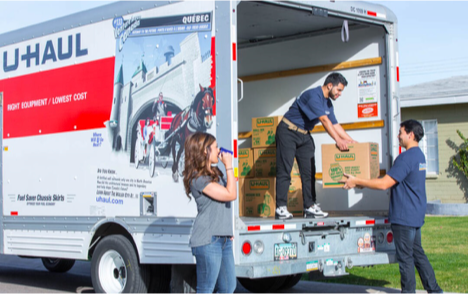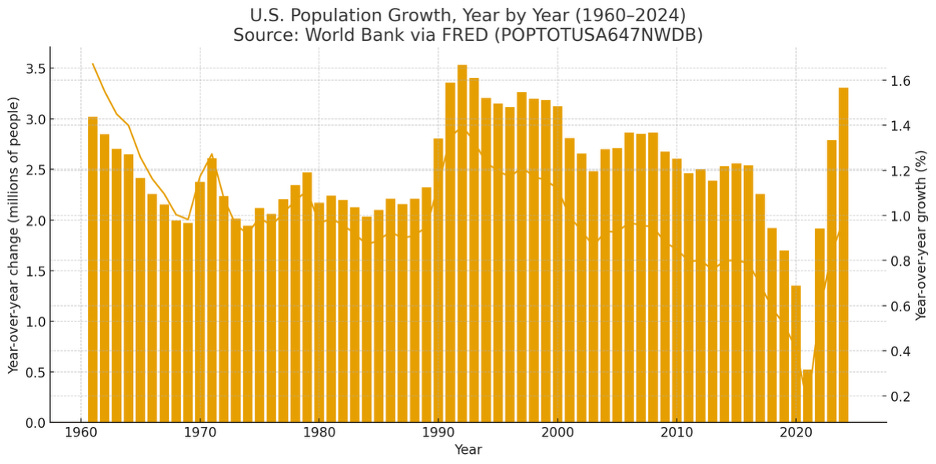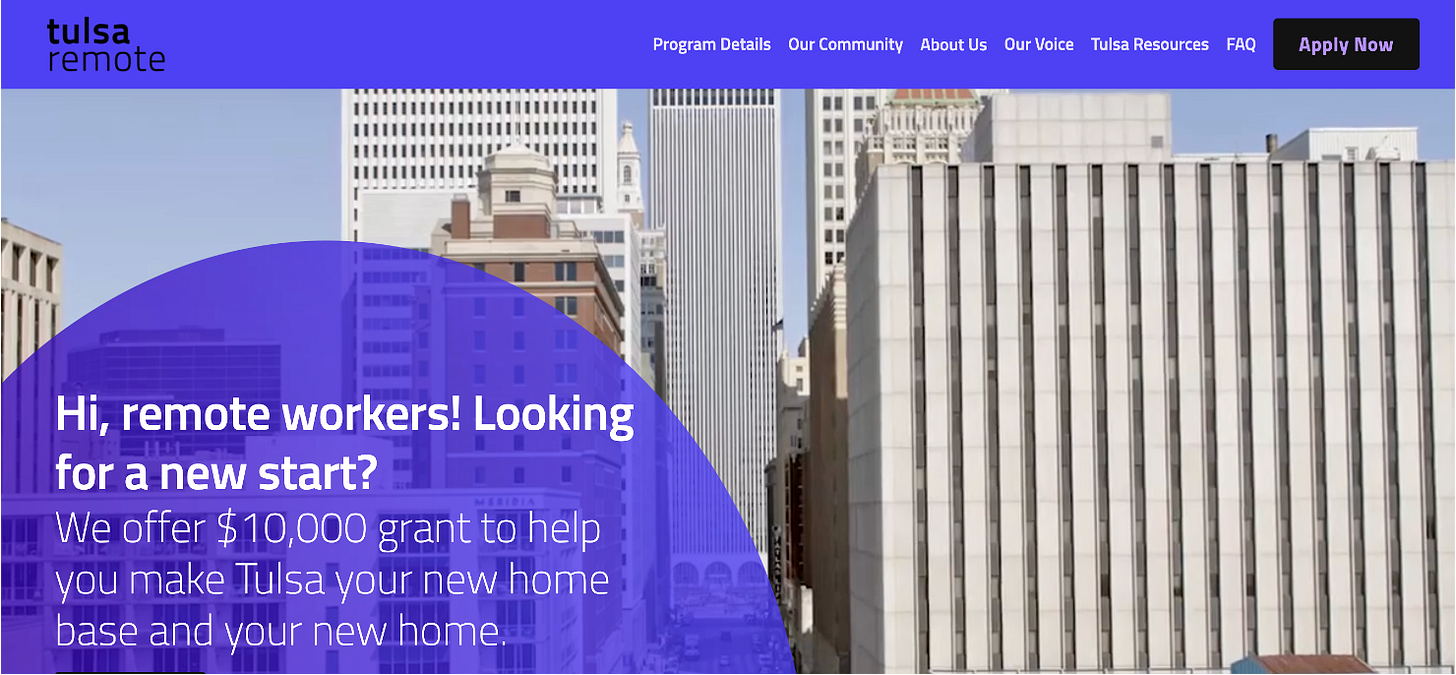How Stuck Are We?
The answer is pretty stuck. But there are lots of reasons, not just a lack of housing production.
The Future Of Where depends on paid subscribers to pay the bills and free subscribers to spread the word. Please consider becoming a subscriber today!
Atlanta, it seems, is always the Los Angeles of the South.
First, Atlanta replaced L.A. the “national suburb” – the place where people from around the country went to find opportunity..
Second, partly as a result, Atlanta replaced L.A. as the sprawl capital of the nation.
Third, Atlanta made a serious run at being the South’s most important filmmaking and entertainment center.
And now, the national suburb phenomenon may be coming to an end. People have stopped coming from elsewhere in the country to the Atlanta are for the first time in decades.
In other words, Atlanta – like much of the rest of the United States – is stuck.
The population of the Metro Atlanta is still growing, of course. That’s because of natural increase – births over deaths – and (at least for the moment) international immigration. But last year, for the first time in a long time, Atlanta experienced a net decline in what’s known as internal migration – people moving from elsewhere in the United States. That’s a phenomenon the Northeast and Midwest have experienced for decades – and one that California has experienced since the 1990s. But for Atlanta – the longtime capital of the so-called New South – it’s something new and ominous.
A Migratory People Who Aren’t Migrating
And that says a lot about the ways in which we’re stuck these days. As Yoni Appelbaum documents in his book Stuck, Americans have always been a migratory people.
Like a lot of people, I used geographical mobility as a means of upward mobility back in the day. In my mid 20s, over a period of less than a year and a half, I moved from Upstate New York, where I had lived my whole life, to D.C. and then to Southern California. To my surprise, I stayed in SoCal for more than 30 years, because I found opportunity that didn’t exist in Upstate and openness I didn’t find in D.C., which is a claustrophobic company town.
But that was a long time ago and things have changed.
Part of it is, simply, that the population of the United States isn’t growing as fast as it used to. Or, to put it more accurately, the number of people being added is the same as it was in 1960, when the nation’s population was half what it is today: about 2.5 million to 3 million people a year. So, relatively speaking, there just aren’t as many people available to move as there used to be.
But part of it is that people simply aren’t moving anymore. Back in the early ‘60s, when JFK was president, about one in every five people in the United States moved every year. At the beginning of the pandemic, as the chart below from the Joint Center for Housing Studies, that figure dropped to one in 10 for the first time ever. In 2023, the figure was 7.8% -- an all-time low.
Source: Joint Center for Housing Studies
Why Are We Stuck?
There are a lot of theories about why everybody in the United States is stuck – stuck in their job, stuck in their apartment, stuck in their job, stuck in the parents’ extra bedroom. Maybe the most persistent theory is that the places that have a lot of economic opportunity – the coasts especially – simply haven’t built enough housing. That’s the YIMBY theory and it’s also Appelbaum’s theory in Stuck. The idea is that people simply aren’t going to move someplace to take advantage of economic opportunity if they can’t afford to live there.
There’s a lot of truth to this, but it strikes me as a little too simplistic. A lot of people are still moving from state to state. California is a place of way less opportunity than it used to be, but there’s still a chance at upward mobility. In 2023, more than 400,000 people moved from other states to California in 2023. That’s down from the half-million or so in previous years. Obviously, this was eclipsed by more than 600,000 out-migrants, but it’s not nothing. And even Texans still move to California (as I did in 2023). Close to 100,000 Californians are moving to Texas each year, but even so something like 40,000 Texans move to California each year, and that number is pretty constant.
And while the housing market definitely suffers from long-term under-production, people are stuck for other reasons. Nobody with a 2.5% mortgage wants to move. Nobody with low rent wants to move. Nobody with a mediocre job can afford to move. There’s a whole lot of supply and demand issues going on.
Some places are still drawing a lot of folks. In 2023, Texas – a state with a lot of housing and a lot of jobs – drew more than 600,000 people from other states. (Of course, more than 400,000 moved out, making it a mirror image of California.) As housing prices rise in many parts of Texas – especially Houston and Dallas – it remains to be seen whether the boom will continue.
A screenshot from Tulsa Remote’s web site
And with relatively few people moving around compared to the past, places are competing for people more than ever. Some places are literally paying for people to move there – as Tulsa has, by offering remote workers $10,000 to move, paid for by a local foundation. Even so, remote workers lured by the money don’t represent the majority of the region’s population growth. Some 3,600 remote workers have come aboard since 2019, about 7% of the region’s overall population growth. (To be fair, Tulsa’s trying to attract highly economically productive knowledge workers – assuming their remote jobs are not replaced by AI.)
So how stuck are we? I think the bottom line is that we’re stuck in a lot of different ways. It’s not just housing supply. It’s a lot of things that will take us a while to dig our way out of.






To expand on the possibilities Bill raises here, it's possible that at least some of the reasons people move less than they used to are good ones, as opposed to bad ones like unaffordable housing in NYC/LA/SF/DC/etc. Off the top of my head: good restaurants are just massively easier to find in many more places they used to be. When my wife and I used to visit her parents in Murray, KY, there was a superb "special occasion" restaurant, Freight House, we could all go to just 50 miles away, in Paducah. I bet you wouldn't have found a place of that quality in such a small town far from any urban centers 30-40 years ago. Another reason: the Internet means that you can "find your people" from afar if you have very particular or niche interests or hobbies. Still another: airline travel is much cheaper in real dollar terms, so people can live in smaller places but still afford to take trips to exciting places, which maybe takes the edge off.
It’s basically post Great Recession gridlock entangled in demographic overloads—this explains our stuck status. People upstream from us in life are tied down, so that the turnover that greases mobility is not happening. This is written about in my 2025 article, Misalignment of population and housing growth. Or in Peak Millennials (2016),